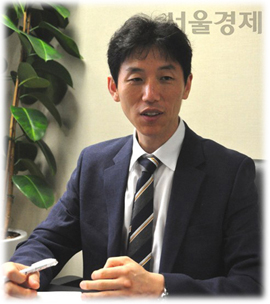| 일 | 월 | 화 | 수 | 목 | 금 | 토 |
|---|---|---|---|---|---|---|
| 1 | 2 | 3 | 4 | 5 | ||
| 6 | 7 | 8 | 9 | 10 | 11 | 12 |
| 13 | 14 | 15 | 16 | 17 | 18 | 19 |
| 20 | 21 | 22 | 23 | 24 | 25 | 26 |
| 27 | 28 | 29 | 30 | 31 |
- Political Change
- Value Systems
- Political Regimes
- Political Regime
- political organization
- Operation of the 2nd Law
- politics and war
- Order of Choice
- 1st Law of politics
- Canonical Politics
- Orderliness of Choice
- Differences in Individual Abilities and Tendencies
- the 3rd Law of politics
- mechanism of politics
- new political science
- power and organization
- politics
- survival process theory
- the 2nd law
- political phenomena
- Mathematical Model of political science
- Task Delegates of the Ruler: Inner Circle
- Cohesion Force
- politics of Inner Circle
- Political power
- Regime Change
- Samjae Capacities
- Mathematical Model of politics
- Samjae Capacity
- Power
- Today
- Total
New Political Science
b. ㉢ Realm of Canonical Politics 본문
㉢ Realm of Canonical Politics
Assuming the characteristics of Samjae capacities and their multi-layered interaction discussed earlier, one can understand the power relations in almost all phenomena of political activity, ranging from macro-level political phenomena to micro-level ones, and from extremely violent to highly organized and debated political phenomena, based on a consistent and simple principle using the 1st law.
Instead, this understanding can be applied to all social phenomena and human activities such as economy and culture. However, to limit our discussion to politics, I will specify the realm of canonical politics[Tab.2.4] as the political realm. Then, canonical politics encompasses both the ideological and armed force layers.
[Ch.3.404] (canonical politics) The most common political phenomenon in the Samjae layer is "canonical politics," which is a process of reorganizing order through decision-making activity. Decision-making activity is a legitimacy debate in the ideology layer, and the reorganization of order involves the use of coercive power in the armed force layer.
Canonical politics is a process of deciding the use of coercive power based on legitimacy disputes. Therefore, canonical politics consists of ㉠ the use of coercive power and ㉡ legitimacy debates, which manifest respectively as the reorganization of order in the armed force layer and decision-making activities in the ideological layer. In other words, the canonical political process is situated in the domains of both the ideological layer and the armed layer, while the ideological layer that passes through the economic layer above the armed layer is not included. According to [Diag.3.D.1], the 'Ideology 1 + Military 2' is the political realm, while 'Military 2 + Ideology 2' or 'Military 2 + Economy 2 + Ideology 2' is not a (pure) political realm.
Through this, one can understand how many political phenomena in reality appear as ideological disputes including incitement and slander, based on the premise of the Armed Force Basis Theory [Tab.2.1]㉠ that politics is a transformed form of war[Ch.2.3] or that armed capacity is the foundation of political order[Tab.2.1]㉠. Politics is the use of armed force based on ideological disputes.
Expanding on the previous [Tab.2.4], the following table illustrates the concept of canonical politics as described above.
[Tab.3.44] Realm of Canonical Politics
| Canonical politics |
Samjae layer | Scale | Layer | Political phenomenon | |
| ㉠ Order reorganization | Armed layer | Middle- level | Activity goal | Actual activity | Use of state power |
| ㉡ Decision making activity | Ideological layer | Micro- level | Actual activity | Prerequi-site | Legitimacy dispute |
As the foundation of politics is armed force, the ideological layer can be considered a relatively micro-level phenomenon compared to the armed layer. In this smaller area, when judging right and wrong in actual activity, the goal becomes to use state power (activity goal). On the other hand, if using power is the actual activity, then convincing obedience (of internal members of the power organization) becomes the prerequisite.
The historian McNiell discussed the mutual relationship between these two layers in describing the national-socialist phenomenon that emerged from the First World War.
Acceptance of the differentiation between ruler and ruled, shepherd and sheep, staff officer and cannon fodder depended on the strength of a shared conviction that the war had to be fought to a finish, cost what it might. Obedience, sustained by that conviction, paradoxically became an expression of freedom. But if the conviction wavered, still more if it disappeared entirely, then the new ruling elites thrown up by the war were suddenly transmogrified into bloodthirsty and tyrannous usurpers, holding everyone in chains for evil reasons of their own. In other words, freedom and justice changed sides when people ceased to believe that victory at any price was a self-evident good.
Here, people's conviction is the result of ideological layer activity, and war is the result of armed layer activity. Depending on the result of the ideological layer activity, the relationship between the governor and the ruled can become either cooperative or hostile.
'Mechanism of Politics' 카테고리의 다른 글
| b. Concentration of Power and its Cause (0) | 2023.12.14 |
|---|---|
| (2) a. When the 2nd Law Operates in A Single Layer (0) | 2023.12.14 |
| b. ㉡ Canonical Process of Political Development (0) | 2023.12.14 |
| b. ㉠ Interaction between Political Capacity and Situation (0) | 2023.12.14 |
| D. (1) a. Samjae Capacities and Multi-Layer Structure (0) | 2023.12.14 |
